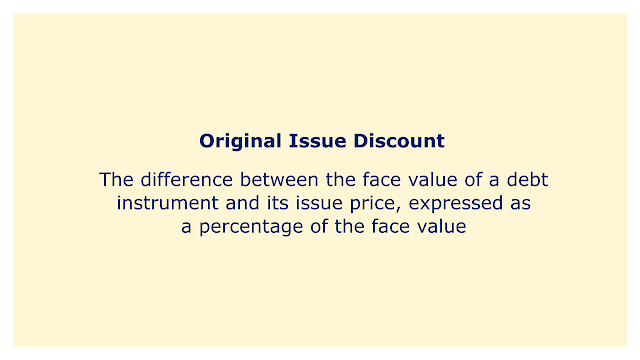 |
| Image: Moneybestpal.com |
Original issue discount (OID) is the difference, stated as a percentage of face value, between a debt instrument's issue price and face value. When a debt instrument is issued for less than what it is worth or when the stated interest rate is lower than the market rate at the time of issuance, OID results.
Consider the case when a bond with a $1,000 face value is sold for $900 with a 3% stated interest rate. However, at the time of issuance, the market interest rate for bonds with similar terms was 5%. The OID is equal to the difference of $100 between the bond's face value and the issue price. In this scenario, $100 would be divided by $1,000's face value, or 10%, to determine the OID.
OID is typically accounted for over the life of the debt instrument as interest income, even though it is not paid to the investor until maturity or redemption. The issuer of the debt instrument may also be required to report the OID to the Internal Revenue Service (IRS) and to the investor on Form 1099-OID.
OID has a number of effects on debt instrument issuers and investors. Being an extra source of income for investors, OID may have an impact on the yield to maturity of a bond or other financial instrument. Since the amount of interest paid on the debt instrument is dependent on its face value rather than its issue price, OID may cause issuers' borrowing costs to rise over time. The inclusion of OID in taxable income and the use of a particular method of accounting for OID are two additional tax restrictions that issuers may be subject to.
